Kingdom of the Dinosaurs (1987)
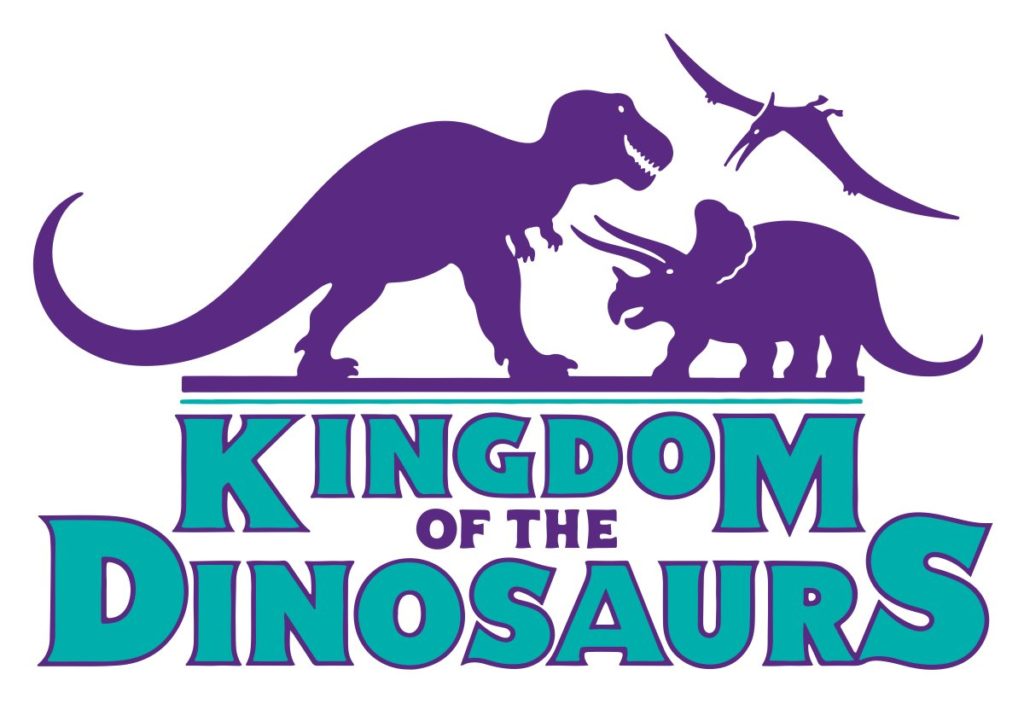
In 1987, the second-story space once home to Knott’s Bear-y Tales was transformed into the Kingdom of the Dinosaurs (coincidentally, produced with the assistance of another of Disneyland’s original cast of Imagineers, Bob Gurr).
It’s easy to fault the park’s then-management for the seemingly short-sighted decision to remove a ride now remembered as a classic, but the new attraction just so happened to catch the “dinosaur” train just before the meteoric rise of prehistory in pop culture thanks to 1988’s The Land Before Time and 1993’s Jurassic Park, arming Knott’s with a marketable attraction tuned to audiences 1980s and ’90s. (During the ride’s first year, attendance at the park was said to have nearly doubled.)
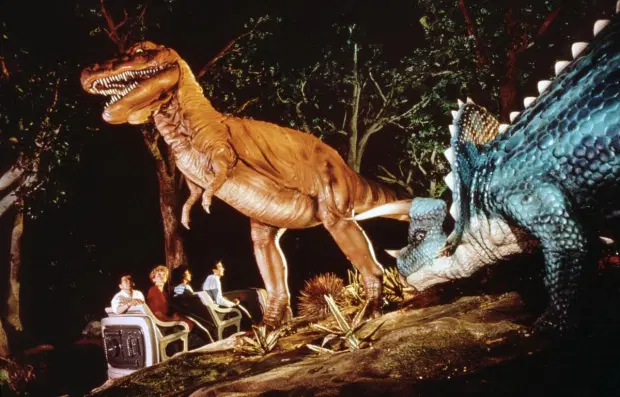
Plus, it must be said that Kingdom of the Dinosaurs was truly a legendary dark ride in its own right. Seated aboard the same trolleys (now re-clad like 1920s time machines), guests would travel through the streets of a roaring Los Angeles before entering the wacky Professor Wells’ workshop and proceeding into a time tunnel (its ticking emblazoned into the minds of a generation of Southern Californians). They’d emerge in a prehistoric world, traveling through an Ice Age, the Triassic period, and the Cretaceous, encountering two dozen animated figures in a slow-moving, informative, and immersive ride.
Suffice it to say that for ’90s kids, Kingdom of the Dinosaurs was an icon, separate entirely from their parents’ longing for the cartoon Bear-y Tales of yore. And as far as transformations of a second story of a theme park arcade go, the 1987 ride was unbeatable.
Kingdom of the Dinosaurs lasted longer than Bear-y Tales had, but not by much. In a bit of irony, the popularity of dinosaurs probably helped contribute to the ride’s end. After a firm decade as head of the prehistoric pack, Kingdom of the Dinosaurs gained a new competitor just a short drive away in 1996 when the Lost Legend: JURASSIC PARK: The Ride opened at Universal Studios Hollywood, making Knott’s ride look like a relic of the past.
But the indisputable end of Kingdom of the Dinosaurs can likely be attributed to a certain lack of interest by its owners… and we don‘t mean the Knott family…
Cedar Fair’s Berry Farm
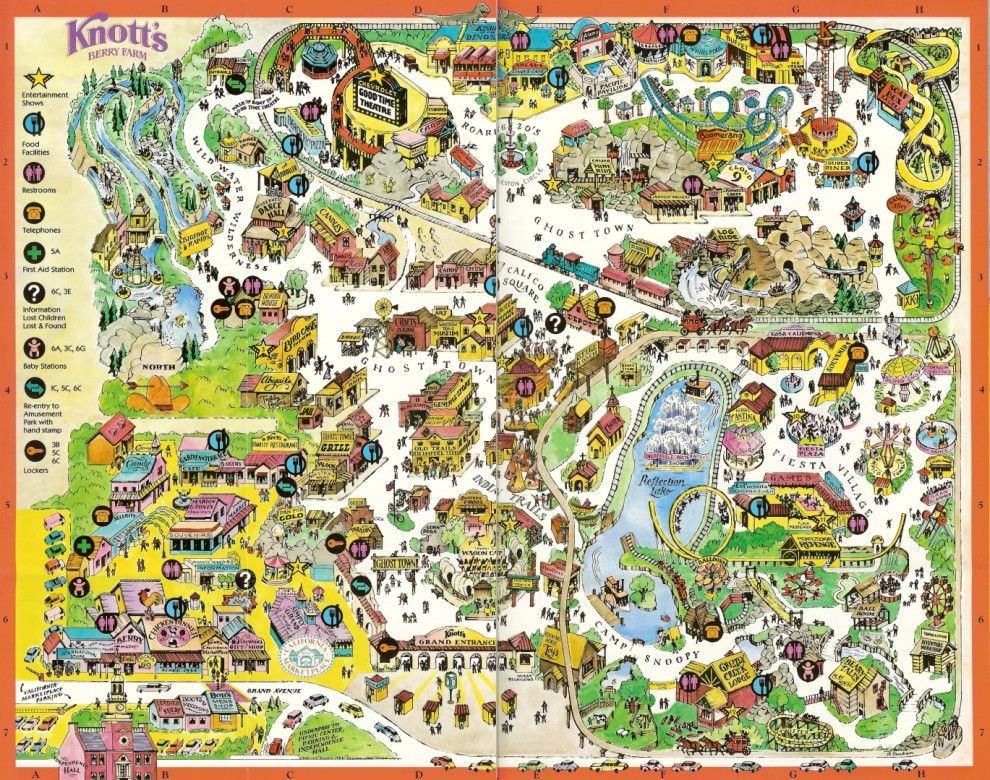
By the mid-1990s, the Knotts had become largely hands-off with the businesses that had sprung from their grandfather’s roadside berry farm seventy years earlier. They sold off the “Knott’s” food specialty brand to ConAgra in 1995. (Knott’s jams and jellies can still be found at supermarkets, today with the J.M. Smuckers Company serving as its parent.)
At about the same time, they put the Buena Park theme park up for sale. Reportedly, The Walt Disney Company put in a bid to purchase Knott’s Berry Farm (likely to transform it into the Possibilityland: Disney’s America). The family declined, allegedly afraid that Disney would bury much of their patriarch’s legacy.
Instead, the park was sold to Cedar Fair – owners of Ohio’s Cedar Point – in 1997 for a reported $150 million. The company’s spokesperson told the LA Times, “[Knott’s Berry Farm] is in great shape physically, and it’s a great draw. It’s different from our other parks in that there are not as many thrill rides.”



Consider that foreshadowing. In the years that followed the 1997 change-of-hands, Cedar Fair added the GhostRider wooden coaster (1998), the Supreme Scream drop tower (1999), the Perilous Plunge splashdown boat ride (2000), the Xcelerator launch coaster (2002), and the Silver Bullet inverted coaster (2004).
That transformation is pretty in line with Cedar Fair’s M.O., driven by its then-CEO Dick Kinzel. A leading general in the “Coaster Wars” of the ’90s and 2000s, Kinzel was remarkably well-known for his laser-like focus on record-breaking thrills, even at the expense of… well… just about anything else. Especially in its acquired parks (including Knott’s in 1997, the Lost Legend: Six Flags Worlds of Adventure in 2004, and five of the Paramount Parks in 2007), Cedar Fair became more known for de-theming its parks of inherited intellectual properties than empowering them.
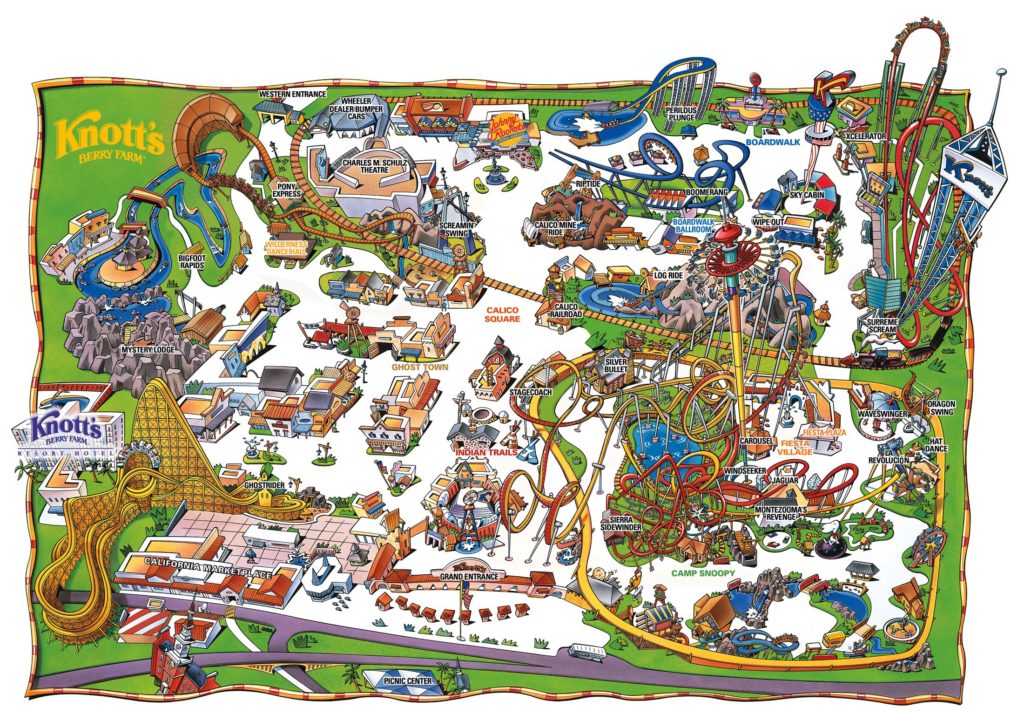
And so it went with Knott’s Berry Farm, where quiet corners, reflective lakes, and historic areas gave way to steel forests of intertwined coaster supports. In 2004 – coinciding with the opening of Silver Bullet – the 17-year-old Kingdom of the Dinosaurs closed forever. Maybe it was inevitable even apart from Cedar Fair’s takeover given the ride’s lack of upkeep, its ’80s tone and tech, and the relative decline of dino-mania.
Whatever the case, in 2004, the second floor of Knott’s arcade was vacant for the first time in thirty years. And given Cedar Fair’s style, it looked likely to stay that way…
Mission: Amusement Dark

However, in 2011, Dick Kinzel stepped away from Cedar Fair, making way for a new leader: former Disneyland President Matt Ouimet. Pretty immediately, Ouimet set out to reverse Cedar Fair’s over-reliance on bare steel coasters.
Especially thanks to his time at Disneyland, the fresh leader was determined to return some nostalgia to Knott’s, too. “This park has a lot of potential,” he told the Orange County Register on his tenth day on the job in 2011. “This is one of those parks that’s a jewel. […] These parks – and Disney’s the same way – have to be part timeless and part timely. You’ve got to respect the legacy.”
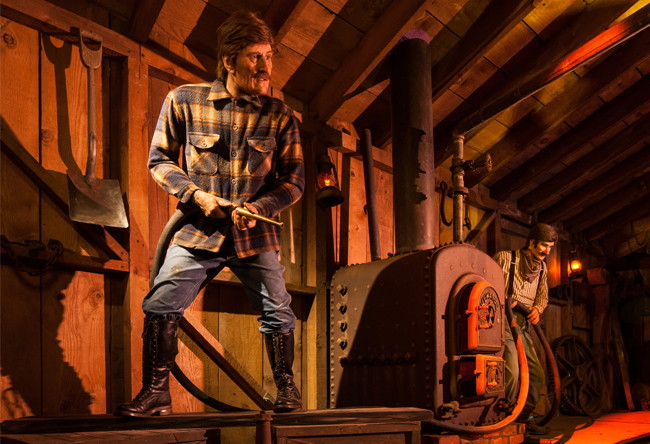

In 2013, Knott’s Timber Mountain Log Ride closed for an extensive five-month refurbishment, reopening with all new scenes, music, show systems, and over 60 animatronic figures designed and built by San Bernardino’s renowned Garner Holt Productions. In 2014, Knott’s equally historic Calico Mine Ride got the same treatment, with 120 new human and animal characters, redesigned lighting and sound, and a completely fresh lease on life.
The very same year, Cedar Fair trademarked the term “Amusement Dark”, leading many fans to speculate that under Ouimet’s reign, the former Disney executive would oversee a portfolio-wide refocus on dark rides after Kinzel’s multi-decade coaster-focused era. That made sense since – excluding the acquired Knott’s Berry Farm and the de-themed Scooby Doo blacklight dark rides at the Paramount Parks they’d purchased – Cedar Fair’s legacy parks contained a cumulative zero(!) dark rides between them.
Lending evidence to the rumor, the company’s Canada’s Wonderland park announced in 2013 that it would partner with Montreal-based ride design firm Triotech to develop an interactive (read: shooting) dark ride called Wonder Mountain’s Guardian. Naturally, the ride would be fully screen-based (and in fact, with the world’s largest screen – a continuous 500-foot long one) and use a roller coaster for its base system. Still, fans began to eagerly speculate that the “Amusement Dark” era could see similar Triotech dark rides roll out across the Cedar Fair chain…
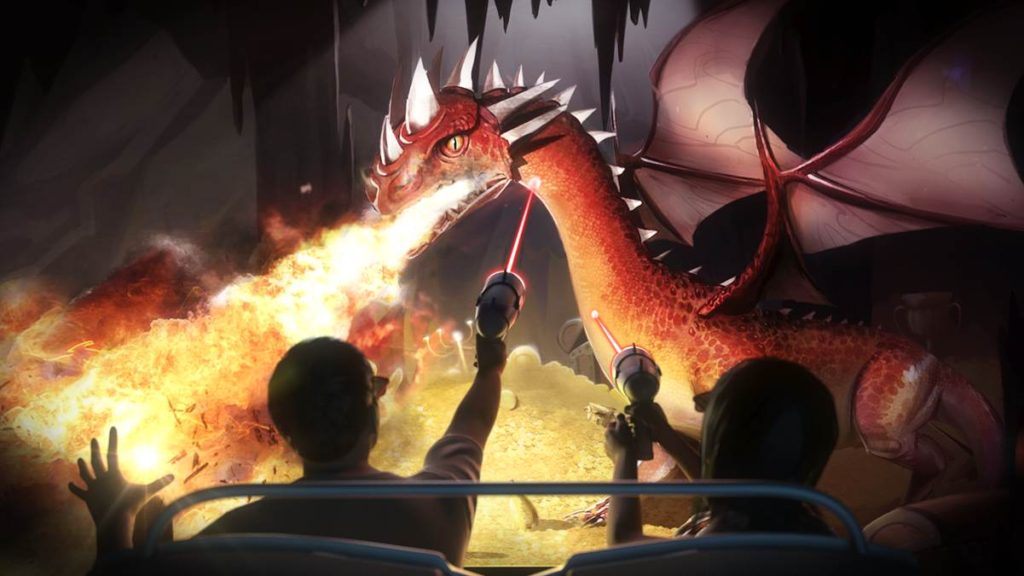
Ouimet spoke with entertainment writer Jim Hill that summer, stating “It’s not exactly a closely guarded secret that – when it comes to Knott’s – we’re trying to figure out what to do with the area where Kingdom of the Dinosaurs & Knott’s Bear-y Tales used to be located. Assuming that the Wonder Mountain’s Guardian ride works out, there will probably be some lessons that we learned up in Canada that we can apply down here in Buena Park.”
Like clockwork, at the close of Wonder Mountain’s Guardian’s first summer, Cedar Fair announced that the park’s three-year dark ride spit-shine would turn Knott’s duo of dark rides back into a trio… At last, the old Bear-y Tale space that had sat vacant since the Kingdom of the Dinosaurs went extinct in 2004 would be reactivated…
Voyage to the Iron Reef (2015)

In November 2014 – a full decade after Kingdom of the Dinosaurs closed – Cedar Fair announced a second interactive digital dark ride to emerge from its partnership with Triotech: Voyage to the Iron Reef. With a reported budget of $10 million (half the price of a new roller coaster, and a fraction of an extravagant Disney attraction), the new interactive ride would take shape on the second story of the arcade – by then part of the park’s re-designated Boardwalk area.
Knott’s Berry Farm general manager Raffi Kaprelyan said to the LA Times, “We can’t compete with Disney and Universal on budget, but we can compete on entertainment value.”
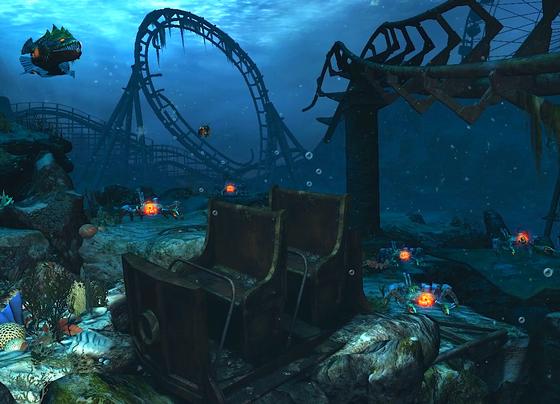
At least on paper, the ride cleverly connected to Knott’s itself, with a setup that explained that steampunk, mechanical ocean animals had arisen from the depths and were devouring the rides of the Boardwalk area. Concept art even suggested that riders would see sunken, rusted versions of former Knott’s attractions – including a Bear-y Tales trolley, above – now feeding steam-powered sea creatures.
Voyage to the Iron Reef officially opened May 15, 2015. Seated in four-person rotating submarine pods armed with “freeze guns,” guests took to the murky blue depths, traveling through six distinct scenes with 10 interactive screens – most separated by simple but effective practical sets or props. Check out a ride-through, point-of-view video of Knott’s Voyage to the Iron Reef below; having a sense of its flow and layout will come in handy in our continued tale of Bear-y Tale’s legacy…
Even suffering from the drawbacks you’d expect from a dark ride with 10% the price tag of a Disney installation (like awkward transitions, “video game” level animation, “stationary-simulation” disconnect, practically no spacial consistency, a lack of “squinching,” and a distinctly irritating and invariable looping musical hum), the ride received pretty lukewarm reception. It wasn’t a great ride, especially for Knott’s, and especially after its historic, animatronic-filled attractions that had been so beautifully spotlighted in the two years prior.
As to how it ranks with other rides of the “Amusement Dark” initiative? It’s difficult to say given that – at least on its face – the initiative never rolled out. Aside from Wonder Mountain’s Guardian in Ontario and Voyage to the Iron Reef in Buena Park, no further Triotech dark rides were built, meaning that even Cedar Fair’s flagship park – Cedar Point – is totally bereft of dark rides (or nearly any chance to get out of the sun)… a very odd state for a destination park.
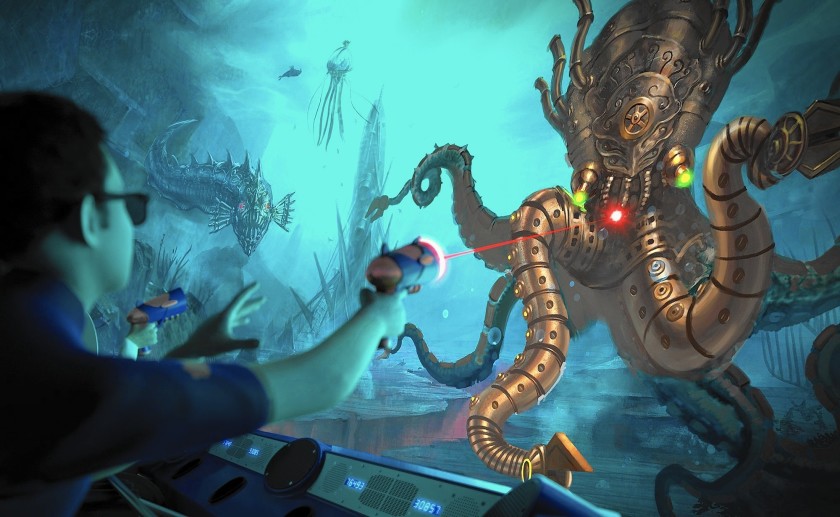
As for Voyage to the Iron Reef, it may not have been a masterpiece packed with joy, warmth, artistry, and heart, but it was – in a manner of speaking – “enough”; a “cool” ride that reactivated a long-vacant corner of the park with a billboard-friendly aesthetic. And being “enough” would just have to be “enough,” right? After all, it’s not like Iron Reef would be sinking anytime soon, much less that the Knottsenbear-y family would even make a return if it did…
… Right?


